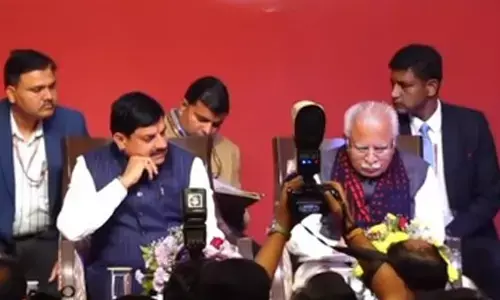Elephant In the World

The story captivates the young and old alike. They derive different meanings from the same story. A kid sees it as a dramatic fight between the elephant and the crocodile. Lord Vishnu listens to the prayer of the elephant, rushes to the place with a chakra in his hand and cuts off the head of the crocodile and releases the elephant. Someone may question that god has taken away the food from the crocodile’s mouth, but we should not stretch a symbol beyond a point. We have to take the message only
The English idiom ‘elephant in the room’ is about an inconvenient subject or a big problem which people do not wish to talk about. In Indian literature the elephant often symbolizes pride, arrogance, gregariousness, over-confidant nature and a tendency to throw one’s weight about. Such is the elephant we see in the popular story of Gajendra, the king elephant, in Srimad Bhagavatam. It is the story of the human being who moves around proudly, who has tasted success and who has no time to stop and reflect, but due to some good karma in the past, he comes to think of the Supreme.
The story captivates the young and old alike. They derive different meanings from the same story. A kid sees it as a dramatic fight between the elephant and the crocodile. Lord Vishnu listens to the prayer of the elephant, rushes to the place with a chakra in his hand and cuts off the head of the crocodile and releases the elephant. Someone may question that god has taken away the food from the crocodile’s mouth, but we should not stretch a symbol beyond a point. We have to take the message only.
The words used in the story are highly symbolic. The elephant moves in the planes of Trikuta mountain – a mountain with three peaks. These are the three gunas – sattva, rajas and tamas, which constitute the world and also the human being. It has several attractions – valleys, lakes, forests, and fruit bearing trees. The elephant struts about with its females, trampling down all obstacles on its path, frightening even dangerous animals, and goes to the lake. The Sanskrit word for lake is kaasaara, which symbolically refers to the world without saara, or substance in it. The elephant drinks deep in the water and splashes water with its trunk and plays.
This pool is the samsara, the worldly attraction by which a person is bound, caught deep by desires. The poet uses the symbol of a crocodile to describe this bondage. The crocodile catches the elephant in the water.
The struggle goes on for a long time and the elephant grows weak. Even as we grow old and feeble, the desire to enjoy remains, but sometimes a person starts realizing that there is something called freedom or liberation from bondage. The real struggle starts now. The bondage is so strong that the elephant cannot come out. Friends or relatives cannot help in this struggle. One has to plough a lonely furrow.
All people do not wake up to this, but due to some good samskaras of past karma, the elephant remembers the prayers it used to do in his past life as a king. Here the poet Vyasa makes a point that there may be several divine forms who fulfil wishes of devotees, but contemplating the Supreme Reality alone can lead to freedom. Contemplation is not for fulfilment of any wish; it is for the right knowledge of one’s real self. The elephant remembers and recites prayers to the one Supreme, formless entity, which is the cause of the universe, the cause of all the drama of existence. Vyasa describes how all other divinities merely watch the elephant, as they cannot give him liberation. The only Supreme Being, called Narayana in this context, comes with Garuda. The poet says that Garuda symbolizes Vedas. It means that the knowledge of Self, as taught in the Vedas, is the means of liberation. What the elephant recites is a marvellous prayer in non-dual worship.
We should not ask whether the elephant went back and played again with his family. The symbol ends with success in the spiritual struggle. The lower level of worship is to worship a god with a name and form for fulfilment of a wish. A real seeker avoids these obstacles and goes beyond the names and forms and contemplates the formless Reality.
(The writer is a former DGP, Andhra Pradesh)
















